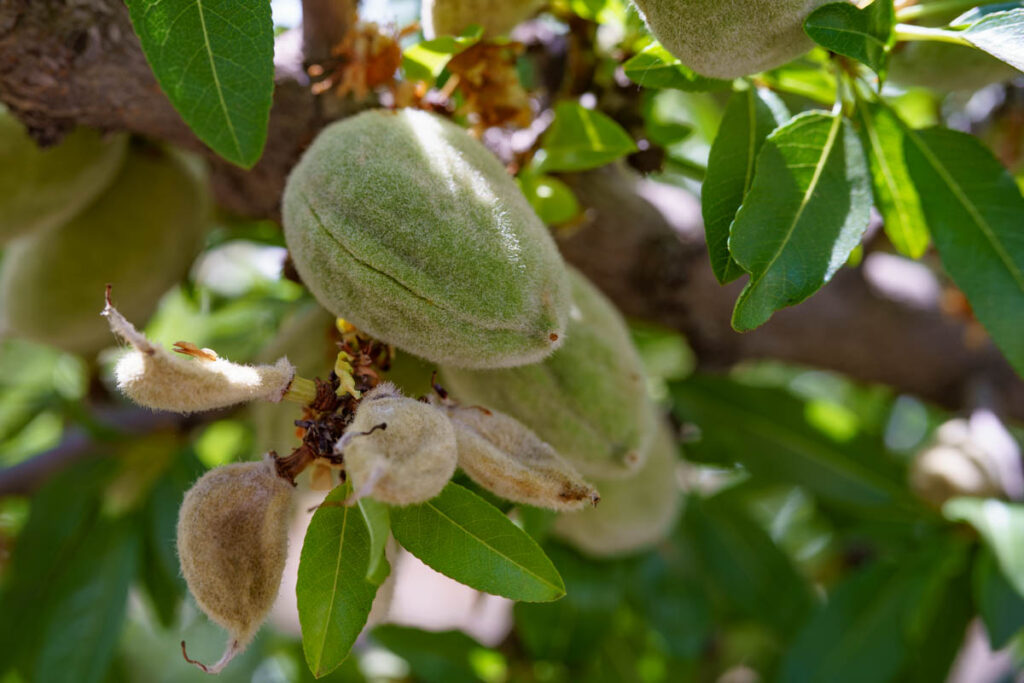Almond nut drop is a common challenge that almond growers face, especially during the growing season between late spring and early summer. It refers to the premature shedding of nuts before they reach full maturity, impacting yield and profitability. If you’re noticing almond nut drop in your orchard, it’s important to act quickly to understand the cause and implement solutions.
Several factors contribute to almond nut drop, including:
- Insufficient irrigation: Without enough water, trees shed nuts to conserve energy. According to UC ANR, drought-stressed orchards can experience up to a 30% increase in nut drop.
- Insect damage: Pests like navel orangeworm can cause nuts to abort early.
- Poor almond tree pollination: Low bee activity or cold weather during bloom can lead to undeveloped nuts that eventually fall off.
- Nutrient deficiencies: Lack of essential nutrients like boron can weaken nut development.
- Overbearing trees: When almond trees produce too many nuts, natural thinning occurs.
Other possible causes include fungal infections like anthracnose and sudden environmental stresses such as strong winds or extreme temperature changes.
Practical Steps to Reduce Almond Nut Drop
Growers can implement several strategies to minimize losses:
- Optimize irrigation schedules using tools like AgNote’s Water Usage Tracking to ensure trees receive consistent moisture.
- Monitor for pests and diseases regularly and apply targeted treatments when needed.
- Enhance pollination efforts by placing enough healthy beehives during bloom.
- Apply balanced fertilizers based on leaf and soil analyses.
- Thin overcrowded trees to balance nut load and promote healthier development.
Using proactive farm management practices can reduce nut drop significantly and protect your yield.
Manage Almond Crops Smarter with AgNote
Managing permanent crops like almonds is easier with AgNote. Our platform offers a dedicated area for Row & Permanent Crop Management, allowing growers to:
- Track plantings, inputs, and expenses.
- Record sprayed materials and irrigation events.
- Plan future crop seasons more effectively.
